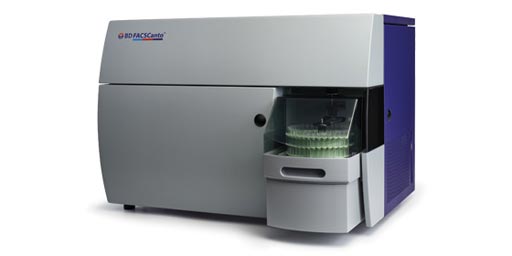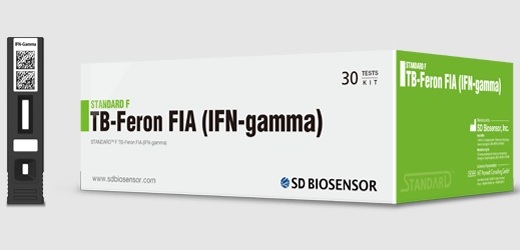Lab Parameters Assessed for New Infectious Disease
By LabMedica International staff writers
Posted on 23 May 2017
Severe fever with thrombocytopenia syndrome (SFTS) is a newly emerging infectious disease and the etiological agent of SFTS has been revealed to be a novel phlebovirus in the family Bunyaviridae, termed severe fever with thrombocytopenia syndrome virus (SFTSV).Posted on 23 May 2017
Laboratory tests on serum samples of SFTS patients commonly showed elevated alanine aminotransferase (ALT), aspartate aminotransferase (AST), lactate dehydrogenase (LDH) and creatine kinase (CK). However viral interaction with the innate immune system played a core role in determining the outcomes of the infection.

Image: The FACS Canto II, an 8-color, flow cytometric analyzer (Photo courtesy of BD BioScience).
Scientists at the Jinan Infectious Diseases Hospital enrolled 69 patients (33 males and 36 females), with confirmed SFTSV infection, between May 2014 and September 2015. These patients were aged between 40 and 78 years. They were divided into two groups, recovery group and poor prognosis group, according to the clinical prognosis of the diseases. Serum anti-SFTSV immunoglobulin M (IgM) and SFTSV ribonucleic acid (RNA) were positive in all infected patients. In addition, 25 healthy volunteers (16 males and 9 females) were also enrolled in this study to serve as normal controls.
Blood cell and platelet counts were measured by a fully automatic blood cell analyzer. A fully automatic biochemical detector was used to determine levels of ALT, AST, LDH, and CK. The peripheral blood samples were processed for an analysis of lymphocyte subsets by flow cytometry within two hours. Lymphocyte subsets were identified by monoclonal antibodies and after processing cells were analyzed with FACS Canto Flow Cytometer and CellQuest software.
The team reported that the clinical manifestations typically became worse on about the 7th day. Most of them had multi-organ dysfunction, and part of them had hemophagocytic lymphohistiocytosis histiocytosis (HLH). The characteristic laboratory findings in the early stage were the drop of platelets (PLT), while the increase of ALT, AST, CK, LDH. SFTSV viral loads reached the highest on days 7 to 10 after onset of fever in SFTS patients. The CD3+, CD3 + CD4+ T cell counts were significantly reduced in poor prognosis group, more so on days 7 to 10 after onset of fever. CD3–/CD19+ (B cell) counts in SFTS patients were significantly higher than that of healthy controls. Eleven days after illness onset, symptoms were improved, accompanied by resolution of laboratory abnormalities.
The authors concluded that their results indicated that SFTS had an acute onset and self-limited course and it was a systemic infection. The host immune response caused tissues and organs injury. The improvement of symptoms and laboratory tests was consistent with the elimination of the virus and recovery of immune response. The study was published in the May 2017 issue of the International Journal of Infectious Diseases.














